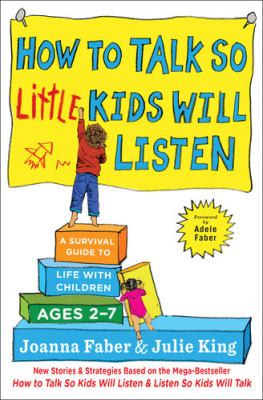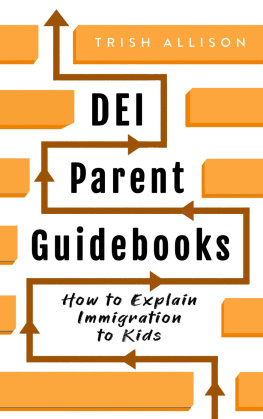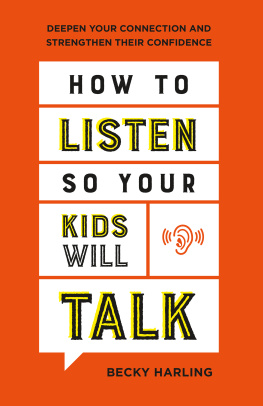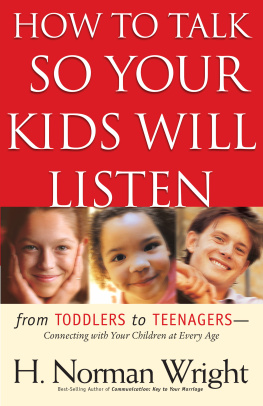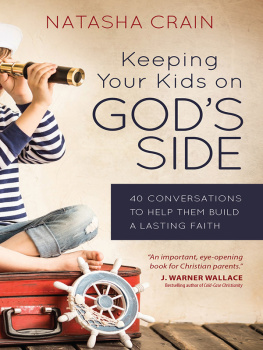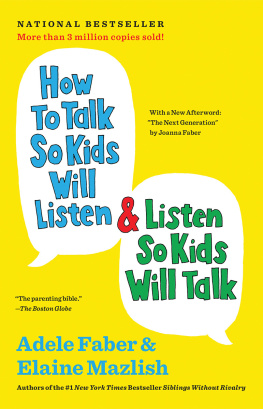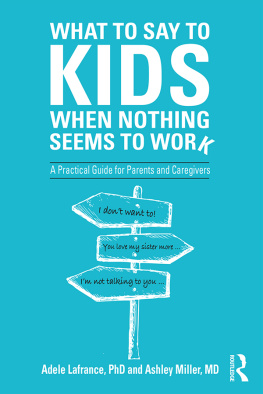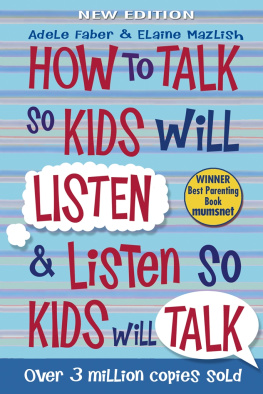Thank you for downloading this Scribner eBook.
Join our mailing list and get updates on new releases, deals, bonus content and other great books from Scribner and Simon & Schuster.
C LICK H ERE T O S IGN U P
or visit us online to sign up at
eBookNews.SimonandSchuster.com

SCRIBNER
An Imprint of Simon & Schuster, Inc.
1230 Avenue of the Americas
New York, NY 10020
www.SimonandSchuster.com
Copyright 2017 by Joanna Faber and Julie King
All rights reserved, including the right to reproduce this book or portions thereof in any form whatsoever. For information address Scribner Subsidiary Rights Department, 1230 Avenue of the Americas, New York, NY 10020.
First Scribner edition January 2017
SCRIBNER and design are registered trademarks of The Gale Group, Inc., used under license by Simon & Schuster, Inc., the publisher of this work.
For information about special discounts for bulk purchases, please contact Simon & Schuster Special Sales at 1-866-506-1949 or .
The Simon & Schuster Speakers Bureau can bring authors to your live event. For more information or to book an event contact the Simon & Schuster Speakers Bureau at 1-866-248-3049 or visit our website at www.simonspeakers.com.
Interior design by Kyle Kabel
ISBN 978-1-5011-3165-3
ISBN 978-1-5011-3163-9 (pbk)
ISBN 978-1-5011-3166-0 (ebook)
A persons a person, no matter how small!
Horton the Elephant
(Dr. Seuss)
The way we talk to our children becomes their inner voice.
Peggy OMara
Contents
Foreword
Adele Faber
The first hint I had of the passion that would fuel the creation of this book came when it was my turn to carpool the authors to nursery school.
I put my daughter Joanna in the car, drove around the corner to collect Julie, and then two more blocks to pick up Robbie. Soon all three children were buckled up in the back seat, happily chattering with each other. Suddenly the mood shifted and a heated debate erupted:
Robbie: He had no reason to cry! He wasnt even hurt.
Julie: Maybe his feelings were hurt.
Robbie: So what? Feelings dont matter. You have to have a reason!
Joanna: Feelings do matter. Theyre just as important as reasons.
Robbie: No, theyre not! You have to have a good reason.
I listened and marveled at these three little people. It wasnt hard to figure out where each of them was coming from. Robbies mother was a serious, no-nonsense woman. Julies mom, a piano teacher, loved talking with me about the discoveries I was making in my parenting workshops with the renowned child psychologist Dr. Haim Ginott. There was always so much for us to think about and try out with our children.
Sometimes bits of our discussions would find their way into the book Elaine Mazlish and I had decided to write together. We had each experienced such profound changes in our own lives and witnessed so many transformations in the lives of others in our group, it seemed wrong not to share our journey with as many parents as possible. Best of all, we had Dr. Ginotts blessing. He read our early drafts and offered his editorial support.
Fast-forward twenty-five years. Our first book, Liberated Parents/Liberated Children: Your Guide to a Happier Family , has been published. It wins the Christopher Award for Literary Achievement Affirming the Highest Values of the Human Spirit. Seven more books soon follow. How to Talk So Kids Will Listen & Listen So Kids Will Talk and Siblings Without Rivalry become best sellers and are published in more than thirty languages.
The little girls I drove to nursery school are grown, married, and each has three children of her own. Each has lived abroad and explored different areas of study. I still have to smile when I remember Julie telling me about an exchange she had at her first internship as a law clerk at a legal aid agency. She was presenting a case for a lawsuit that appeared to be based on a simple misunderstanding.
Can we get them together to talk? Im sure if they could listen to each others point of view they could come to an understanding.
The boss was impatient with her navet. We dont do that. You cant talk to the opposing party.
It was at this point, Julie said, that she started to think she might be in the wrong profession.
And I have to smile when I remember a hurried phone call from Joanna after a frustrating day with the special needs children in her classroom.
The kids wont stop fighting. Its chaos. I cant get through a lesson! What do I do?
I drew a blank. Well, you know what I usually do when Im stuck, but...
Oh, you mean problem-solving. Okay, thanks. Bye! and she hung up.
She swung into action the next morning, and we were thrilled to incorporate the amazing results of her new tactic when Elaine and I were writing How to Talk So Kids Can Learn/At Home and In School .
Finally, each woman found herself responding to the urgent need for parenting workshops in her part of the world: Joanna on the east coast, Julie on the west. After years of helping parents, many of whom had young children who presented a wide variety of challenges, they decided to join forces and produce a book of their own:
How to Talk So Little Kids Will Listen
A Survival Guide to Life with Children Ages 2 to 7
Elaine and I expect youll be delighted and enlightened by all the discoveries youll make as you turn its pages.
Happy reading!
How It All Started
Julie
My two-year-old son peed on the carpet under the crib... again! What to do? My degrees in public policy and law were of no use. I was surprised by how quickly I could be brought to my knees by a small person too young to drive a caror tie his own shoes.
I didnt plan a career as a parent educator. I figured Id be a mom on the side as I advanced my professional career. But when I was told that my first child had significant developmental delays, as did my second, I realized that parenting was not going to be an on the side activity for me. I found myself committed to endless rounds of appointments with medical specialists and physical therapists and advocating for children with neurodevelopmental differences.
Lucky for me, I grew up with a best friend, Joanna, whose mom, Adele Faber, took a parenting workshop with the late, great child psychologist Haim Ginott. Her mom and mine are also close friends, and they tested out their new parenting strategies on us. Little did I know that these methods would become a lifesaver for me so many years later when I faced the challenges of parenting my own three children.
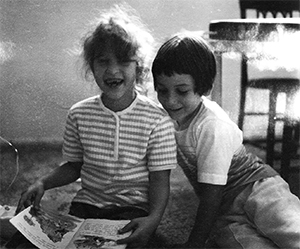
Julie and Joanna in an earlier collaboration.
When the head of the Parent Education committee at my sons preschool was looking for someone to organize an event for parents, I volunteered to lead a workshop based on Adeles book How to Talk So Kids Will Listen . My first eight-week group was such a success that everyone insisted I continue to lead the group for another eight weeks, and another... and we ended up meeting for four and a half years! Through word of mouth, other people asked me to lead workshops, which snowballed into a career I had never imagined.
Meanwhile, my friendship with Joanna continued. In many ways she and I are quite different. She loves the outdoors and dogs (you will find many references to dogs throughout our book), while I love to sit at the piano playing classical music (which is why Joannas references to pop music often go over my head). Yet Ive always felt I can talk to her about anything, and she really listens and understands. Even though we now live on opposite coasts, weve spent the last year writing together and the result is this book.


